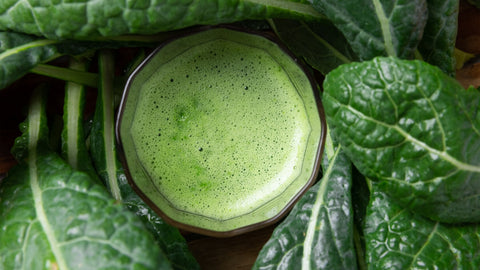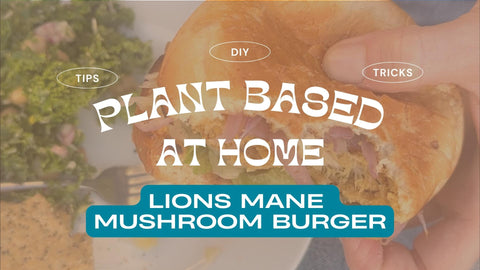
At Pulp Pantry, we’re quite literally the pulp queens. But we know lots of you are wondering what you can do with juice pulp at home? We get these kinds of email questions all the time! We wanted to share some ideas and information about juice pulp: what it is, whether its nutritious, and some starting points for ideas and recipes as to how you can turn your pulp into a delicious, fiber-filled meal.
What is pulp? Pulp is the fibrous byproduct leftover after extracting the juice from fresh fruits and vegetables, and technically, it’s called pomace.

How much juice pulp goes to waste each year? Although the exact amount of juice pulp that goes to waste annually is not known, it’s estimated that fruits and vegetables make up 39% of total food waste in the United States (ReFed).
Since pulp is a byproduct of juicing fresh fruits and vegetables, a significant amount of it is likely to contribute to this waste. However, by finding ways to use and upcycle juice pulp, we can reduce this waste and create nutritious and delicious food products.
When juicing, how much pulp exactly is generated? Generally, the juicier, thicker the vegetable, the more juice you’ll yield. Juicier vegetables like cucumbers might yield 80% or more juice. Leafy greens like kale might yield around 50% juice (and therefore, 50% of the vegetable that is leftover in the pulp).

Companies currently pay millions of dollars in hauling contracts to compost their pulp, while others admit they have no choice but to landfill. But, we can use it in many ways. For example, Pulp Pantry has created a food waste solution by upcycling nutritious juice pulp into delicious snacks.
Pulp contains nearly 95% of the fiber of fresh fruits and vegetables, as well as up to half the nutrients, making it a great source of nutrition that shouldn’t be left behind.

Pulp is rich in fiber which helps regulate the body’s use of sugars, keep hunger and blood sugar in check, and feed our gut microbiome, full of billions of bacteria cells that help us to digest food.
At Pulp Pantry, collecting pulp from our suppliers is a win for them, a win for us, a win for the planet, and a win for you! As we capture that nutrition and create real veggie chips that all can enjoy.
At home, how do you extract juice from pulp? And, how do you store juice pulp? Can you eat juice pulp? Is juice pulp good for composting? How long does juice pulp last in the fridge? What can you add to juice pulp to make it taste better? These are some of the questions that you might have when thinking about juice pulp… and we’re here to answer!
‘Juice pulp is a byproduct of juicing that often goes to waste, but there are many ways to make use of it. You might be wondering, "What can I do with juice pulp?" The answer is, quite a lot! For example, you can use it to make crackers, muffins, or even burgers (or hummus!!). You can also add it to smoothies or use it as a thickener in soups and stews. We have tons of recipes here on our blog for you to explore.
One common question people have is, "Can you eat juice pulp?" The answer is yes, you can! In fact, juice pulp is full of fiber and nutrients that can be good for you. Just be sure to properly store it and use it in a timely manner. The nutritional content of juice pulp can vary depending on the type of fruit or vegetable and the amount of pulp extracted during juicing. Pulp is generally high in fiber, which is important for maintaining digestive health and promoting feelings of fullness.
In terms of other nutrients, pulp may contain some vitamins and minerals depending on the source fruit or vegetable. For example, orange pulp contains vitamin C, folate, and potassium, while carrot pulp is a good source of vitamin A and potassium.

It's worth noting that the nutritional content of pulp can vary based on how it is prepared and consumed. For example, cooking or baking pulp may alter its nutrient content, while consuming pulp as part of a juice or smoothie may provide different benefits than eating the whole fruit or vegetable.
So, "How do you store juice pulp?" It's best to keep it in an airtight container in the fridge or freezer. This will help preserve its freshness and flavor. Speaking of which, "How long does juice pulp last in the fridge?" Generally, it's best to use it within 1-2 days to avoid spoilage.
Another question people often ask is, "Is juice pulp good for composting?" Yes, it is! Juice pulp is an excellent source of organic matter that can help enrich soil and promote healthy plant growth.
But, "What nutrients are in juice pulp?" Well, it depends on the fruits and vegetables used to make the juice. However, most pulp contains vitamins, minerals, and antioxidants that are beneficial to your health.
If you have leftover pulp that you can't use right away, you might be wondering, "Can you freeze juice pulp?" Yes, you can! Just put it in a freezer-safe container and freeze until you're ready to use it.
Finally, "What can I add to juice pulp to make it taste better?" The possibilities are endless! You can add spices, sweeteners, or even other fruits and veggies to give it a boost of flavor. Get creative and have fun experimenting!






I use carrot pulp in my carrot cupcakes and beet pulp for red velvet cake.